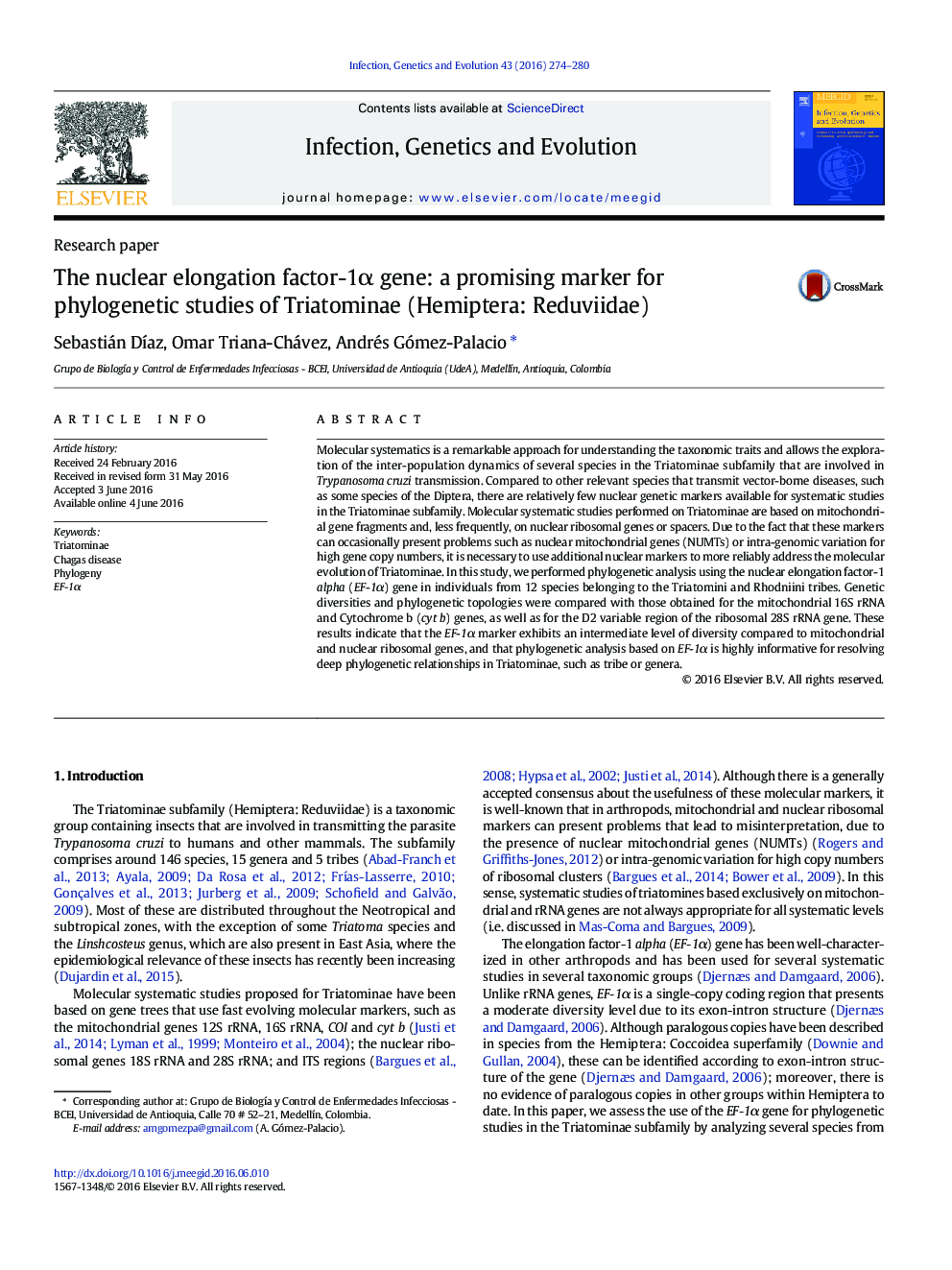| کد مقاله | کد نشریه | سال انتشار | مقاله انگلیسی | نسخه تمام متن |
|---|---|---|---|---|
| 2822968 | 1570160 | 2016 | 7 صفحه PDF | دانلود رایگان |

• The EF-1α gene fragment was amplified and analyzed in several Triatominae species.
• The EF-1α has high informative resolution at deep phylogenetic levels.
• The EF-1α can help to fill gaps in the phylogeny of Triatominae subfamily.
Molecular systematics is a remarkable approach for understanding the taxonomic traits and allows the exploration of the inter-population dynamics of several species in the Triatominae subfamily that are involved in Trypanosoma cruzi transmission. Compared to other relevant species that transmit vector-borne diseases, such as some species of the Diptera, there are relatively few nuclear genetic markers available for systematic studies in the Triatominae subfamily. Molecular systematic studies performed on Triatominae are based on mitochondrial gene fragments and, less frequently, on nuclear ribosomal genes or spacers. Due to the fact that these markers can occasionally present problems such as nuclear mitochondrial genes (NUMTs) or intra-genomic variation for high gene copy numbers, it is necessary to use additional nuclear markers to more reliably address the molecular evolution of Triatominae. In this study, we performed phylogenetic analysis using the nuclear elongation factor-1 alpha (EF-1α) gene in individuals from 12 species belonging to the Triatomini and Rhodniini tribes. Genetic diversities and phylogenetic topologies were compared with those obtained for the mitochondrial 16S rRNA and Cytochrome b (cyt b) genes, as well as for the D2 variable region of the ribosomal 28S rRNA gene. These results indicate that the EF-1α marker exhibits an intermediate level of diversity compared to mitochondrial and nuclear ribosomal genes, and that phylogenetic analysis based on EF-1α is highly informative for resolving deep phylogenetic relationships in Triatominae, such as tribe or genera.
Co-phylogeny of EF-1α fragment and partitioned combined 16S rRNA, cyt b and D2-28S rRNA markers in Triatominae. Phylogenetic trees were obtained using ML and Bayesian methods and the numbers on branches indicate the bootstrap values from ML and posterior probabilities from Bayesian analyses, respectively. Branch width indicates low node score match between topologies (see text). Taxon names are defined for the first genus letter and the three first letters of the species name (i.e. Recu = Rhodnius ecuadoriensis).Figure optionsDownload as PowerPoint slide
Journal: Infection, Genetics and Evolution - Volume 43, September 2016, Pages 274–280